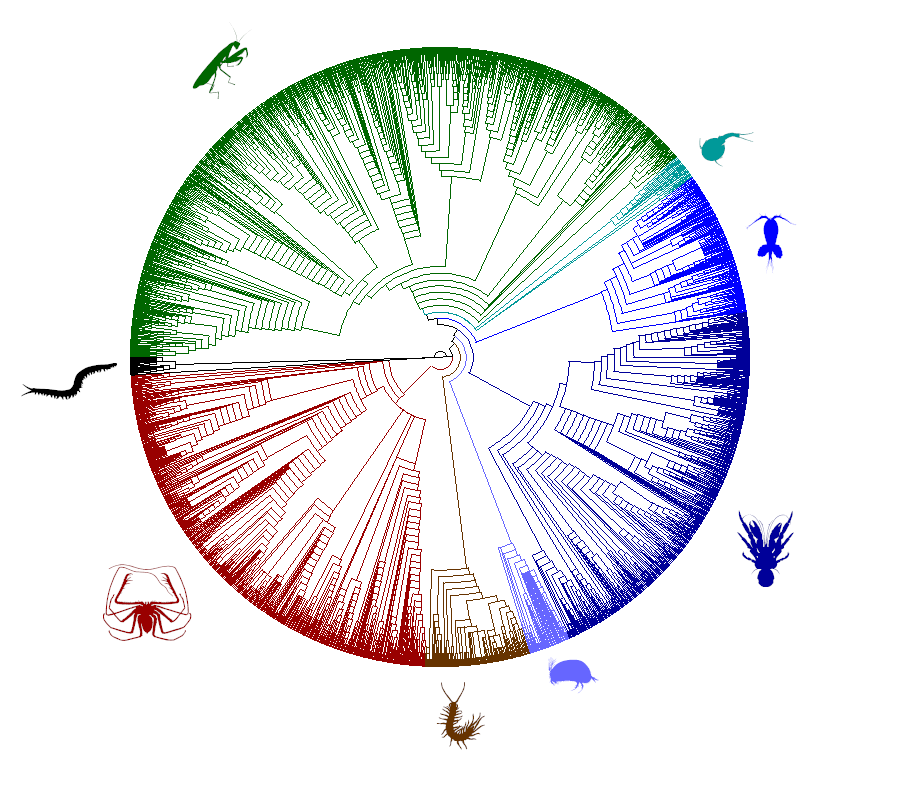Something I’ve been working on for the better part of a year, my ultimate magnum opus. With well over 100 sources, here is the phylogeny of all* extant families of (pan)arthropods!
Major groups are highlighted as follows, starting from the black portion of the tree going counter clockwise. Lobopodia, Chelicerata, Myriapoda, Oligostraca, Multicrustacea, Copepoda, Allotriocarida (excluding Hexapods), and Hexapoda. This tree contains over 3000 families. My exact methods will be stated in a paper I plan to publish at some point in the near future.
*well, it is possible I might have missed some very obscure families, and there is some disagreement over weather some families should be lumped or split. So technically I might not have gotten truly “all” of them.
You may ask. why did I make this? Well, simple. I think it should exist. There is even species level super trees for most groups of vertebrates. Of course, that is not possible for arthropods at the moment. But family level is a pretty huge first step. I hope such a tree will prove useful for researchers in the future, and if they do use it they are encouraged to adjust and refine the tree as necessary. How many of these families are observed on inaturalist? Probably very few, haha. Any questions or comments are welcome.
I would link a pdf of the tree so you can sift through it yourself and look for your favorite arthropod taxa, but sadly inaturalist you arent able to upload pdfs here. Sad!
